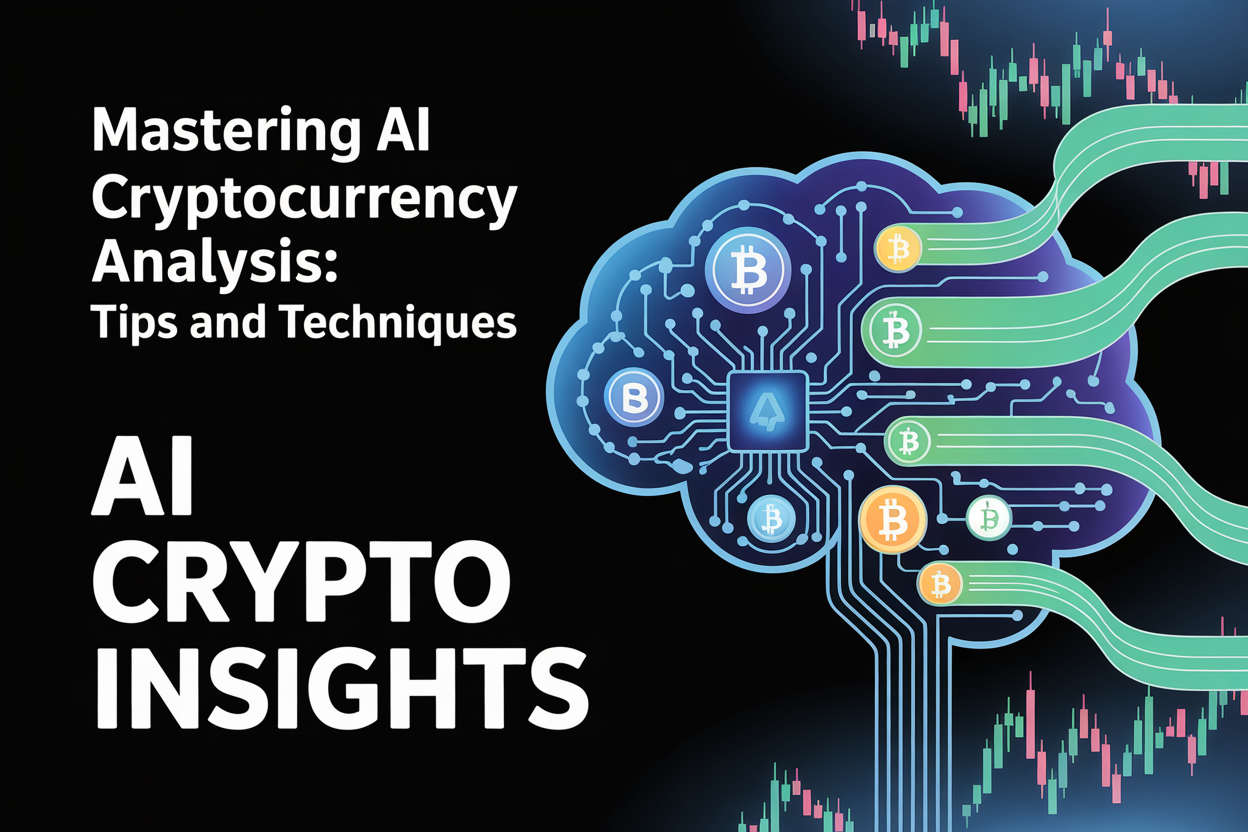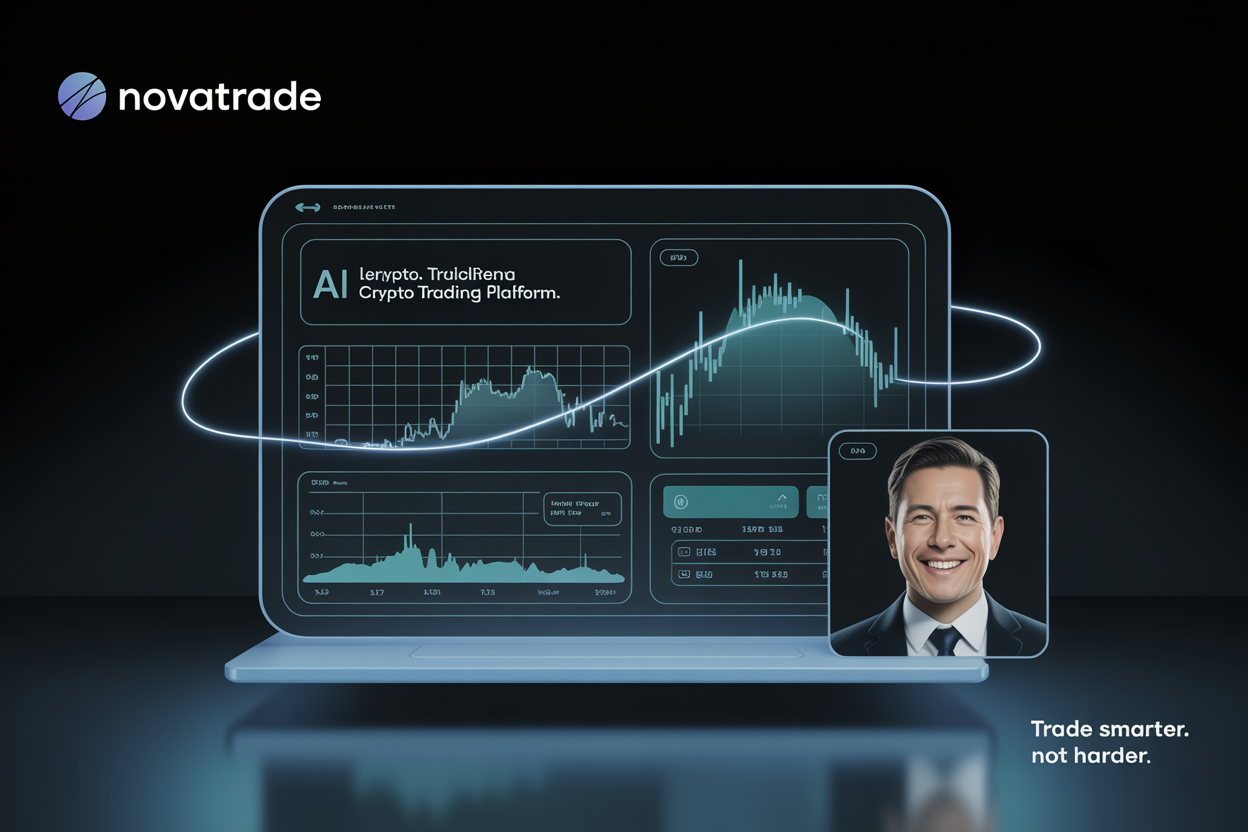Now Reading: Mastering AI Cryptocurrency Analysis: Tips and Techniques
- 01
Mastering AI Cryptocurrency Analysis: Tips and Techniques
Mastering AI Cryptocurrency Analysis: Tips and Techniques

The world of cryptocurrency is changing fast. To stay ahead, you need the latest tools and techniques. One big step forward is using artificial intelligence (AI) for market analysis.

AI helps investors and traders understand crypto market trends better. This guide will show you how to master AI cryptocurrency analysis. You’ll get a big advantage in the market.
Key Takeaways
- Understand the role of artificial intelligence in cryptocurrency analysis
- Learn how to leverage AI for predicting crypto market trends
- Discover the best practices for integrating AI into your investment strategy
- Gain insights into the latest tools and techniques for AI cryptocurrency analysis
- Stay ahead of the competition with expert tips and techniques
The Evolution of Cryptocurrency Analysis
Cryptocurrency analysis has changed a lot over time. It has moved from simple guessing to using advanced technologies. This change is because the markets are getting more complex and we need better predictions.
Traditional Analysis Methods
At first, people used old methods like technical and fundamental analysis. These methods were good but had big problems.
Technical Analysis Limitations
Technical analysis looks at charts and patterns to guess future prices. But, it has big issues in the fast-changing crypto market. These include:
- It relies on past data, which might not show what will happen next
- It struggles to handle sudden changes or outside factors
- Interpreting chart patterns can be very subjective
Fundamental Analysis Challenges
Fundamental analysis looks at what affects a crypto’s value. But, it also has big challenges:
- It’s hard to measure how news and events affect prices
- Figuring out a crypto’s true value is tough
- Speculation and market mood play big roles
The AI Revolution in Crypto Markets
Artificial Intelligence (AI) and machine learning in finance have changed crypto analysis. AI methods are smarter and more accurate for understanding the complex crypto market.
Key Advantages of AI-Driven Approaches
AI analysis has many benefits, including:
- It can handle huge amounts of data fast and right
- It’s better at making predictions with machine learning algorithms
- It’s better at spotting patterns and trends in digital asset predictions
By using blockchain technology and AI, analysts can see deeper into market trends. This helps them make better investment choices.
Understanding AI Cryptocurrency Analysis
AI is changing how we analyze cryptocurrencies. It helps traders and investors make better choices. We’ll look at what AI cryptocurrency analysis is, its parts, and why it’s better than old ways.
Defining AI in the Context of Crypto
AI in crypto analysis uses smart algorithms and learning to predict market trends. Machine learning lets systems get better at predicting over time.
Machine Learning vs. Traditional Algorithms
Machine learning algorithms change with new data, unlike old algorithms. This makes them great for automated trading strategies that need current data.
Key Components of AI-Driven Analysis
AI analysis has two main parts: data processing and pattern recognition systems. Together, they analyze lots of data and spot trends that old methods miss.
Data Processing Capabilities
AI can handle big data sets, like price history and market feelings. This leads to more accurate data analytics for cryptocurrencies and smarter choices.
Pattern Recognition Systems
Pattern recognition systems are key for spotting trends and predicting prices. They use past data to forecast market changes, helping with cryptocurrency market forecasting.

Knowing how AI helps in crypto analysis can give investors an edge. As AI gets better, it will open up new ways to succeed in the market.
Essential AI Technologies for Crypto Analysis
AI is changing how we analyze cryptocurrencies. It brings more accurate and efficient tools to the table. This change is thanks to key technologies that help us understand and predict the market better.
Machine Learning Algorithms
Machine learning is key in AI crypto analysis. It trains algorithms on past data to guess future trends.
Supervised Learning for Price Prediction
Supervised learning uses labeled data to guess prices. It learns from past prices to predict the future.
Unsupervised Learning for Market Patterns
Unsupervised learning finds patterns without labels. It uncovers hidden trends and connections in crypto data.
Natural Language Processing
NLP analyzes text about cryptocurrencies, like news and social media.
Sentiment Analysis Techniques
Sentiment analysis checks text to see the market’s mood. It tells us if people are optimistic or pessimistic.
Deep Learning Networks
Deep learning networks are part of machine learning. They’re great for big datasets.
Recurrent Neural Networks (RNNs)
RNNs work well with sequential data, like time series in crypto markets.
Convolutional Neural Networks (CNNs)
CNNs are known for image recognition. But they also help in crypto analysis by spotting patterns in charts.
These AI technologies are making crypto analysis better. They help us make more accurate predictions and make smarter choices.
Setting Up Your AI Cryptocurrency Analysis Environment
Starting AI cryptocurrency analysis needs the right setup. This means choosing the right hardware, picking the best software tools, and finding good data sources.
Hardware Requirements
Choosing between CPU and GPU is key for AI analysis. GPU is better for complex tasks needed by machine learning.
CPU vs. GPU Considerations
A GPU is great for deep learning, which helps with crypto market trends. But, a strong CPU is also important for system performance.
Software Tools and Platforms
Choosing the right software is crucial for AI analysis. Python libraries like TensorFlow and PyTorch are top picks for machine learning.
Python Libraries for Crypto Analysis
- TensorFlow: Ideal for large-scale machine learning tasks.
- PyTorch: Known for its flexibility and ease of use in developing AI models.
Cloud-Based AI Solutions
Cloud services give scalable AI solutions. They offer powerful computing without big hardware costs.
Data Sources and APIs
Good data is key for AI models. Exchange APIs and historical data providers are vital for market data.
Exchange APIs and Historical Data
APIs from exchanges give real-time and past data. This is crucial for blockchain technology trends and smart decisions.
Alternative Data Sources
Other data like social media and news can offer insights. They are valuable when analyzed with machine learning in finance methods.

Collecting and Preparing Cryptocurrency Data
The accuracy of AI cryptocurrency analysis depends on the quality of the data. To create effective automated trading strategies, it’s key to collect and prepare the right data.
Types of Data for AI Analysis
Cryptocurrency data comes in many forms. Each type offers unique insights into market trends.
- Price and Volume Data: Historical price movements and trading volumes are key to understanding market trends.
- On-Chain Metrics: Data like transaction counts, wallet balances, and blockchain congestion show a cryptocurrency’s health.
- Social and News Data: Sentiment analysis from social media and news can greatly affect market predictions.
Data Cleaning Techniques
Raw data often has errors and missing values. Good data analytics for cryptocurrencies needs strong cleaning methods.
- Handling Missing Values: Methods like interpolation or using historical averages can lessen missing data’s impact.
- Normalizing Crypto Data: Normalization makes sure different data types are comparable, boosting model accuracy.
Feature Engineering for Crypto Data
Feature engineering turns raw data into useful features. These features boost AI models’ predictive power, essential for digital asset predictions.
- Creating Technical Indicators: Indicators like Moving Averages or RSI help spot market trends.
- Temporal Features: Adding time-based features captures periodic patterns in cryptocurrency markets.
For more insights on analyzing crypto market trends, visit CryptoMaximal.
Implementing Machine Learning Models for Price Prediction
Predicting cryptocurrency prices is a tough task. Machine learning can help solve this problem. It uses past data and smart algorithms to guide investors in the unpredictable crypto market.
Regression Models
Regression models are key in machine learning for predicting prices. They include Linear Regression and Random Forest, which are used in AI cryptocurrency analysis.
Linear Regression Implementation
Linear regression models the relationship between price and other factors. It’s a basic yet powerful tool. For more on linear regression, check out this resource.
Random Forest Models
Random Forest models are more advanced. They use many decision trees to boost accuracy. They’re great for cryptocurrency market forecasting because they handle big data well.

Time Series Analysis
Time series analysis is vital for spotting trends in crypto prices. ARIMA and LSTM are top models for this.
ARIMA Models for Crypto
ARIMA models forecast prices based on past data. They’re essential for algorithmic trading solutions. They help traders spot trends and predict prices.
LSTM Networks Implementation
LSTM networks are perfect for sequential data like crypto prices. They’re a key part of AI-powered crypto trading platforms. Learn more about LSTM and its role in crypto at this link.
Neural Networks for Price Forecasting
Neural networks, like LSTM, are crucial in AI cryptocurrency analysis. They can learn complex data patterns.
Building a Basic Neural Network
Creating a neural network requires choosing the right design. Then, train it on historical data and fine-tune it for the best results.
Evaluating Model Performance
It’s important to check how well machine learning models work. Use metrics like Mean Absolute Error (MAE) and Mean Squared Error (MSE) to see how accurate their predictions are.
Conducting AI Cryptocurrency Analysis
Using AI for cryptocurrency analysis helps investors make better choices. It looks at complex data patterns. This includes spotting market trends, predicting price swings, and seeing how different coins relate to each other.
Market Trend Identification
AI tools can sift through lots of data to find patterns in the crypto market. This lets investors know if the market is heading up or down.
Long-Term vs. Short-Term Predictions
AI can predict both short and long-term trends. Long-term predictions show the big picture, while short-term predictions spot quick trading chances.
Volatility Forecasting
Crypto markets are known for their ups and downs. AI predicts these swings by looking at market mood, news, and world economy.
Risk Assessment Metrics
Knowing the risks is key in crypto investing. AI uses tools like Value-at-Risk (VaR) and Expected Shortfall (ES) to estimate possible losses.
Correlation Analysis Between Cryptocurrencies
Coins often move together. AI studies these connections to help investors spread out their risks.
Portfolio Diversification Strategies
AI helps investors diversify by showing how coins relate. It suggests the best mix of coins based on past data.
By using AI for analysis, investors get a better grasp of the crypto market. This makes it easier to make smart investment choices.
Sentiment Analysis of Crypto Markets
Understanding market sentiment is crucial for trading cryptocurrencies. Sentiment analysis helps determine the emotional tone behind words. It’s a key tool for traders and investors.
By analyzing sentiment, one can see if the market is optimistic or pessimistic. This insight helps in making better investment choices.
Social Media Monitoring
Social media platforms are a treasure trove for sentiment analysis. Twitter and Reddit are favorites among crypto fans and investors.
Twitter and Reddit Data Mining
By mining data on these platforms, we can understand public feelings about cryptocurrencies. Tools and APIs help sort out the important information.
Influencer Impact Assessment
Social media influencers can sway market sentiment. Knowing who these influencers are can offer clues about market shifts.
News Analysis Algorithms
News and announcements are also vital for sentiment analysis. News analysis algorithms sift through news to find the emotional tone.
Event Detection Systems
Event detection systems spot big events that might change market mood. This includes things like new laws or security issues.

Sentiment Indicators and Metrics
Various indicators and metrics help measure market sentiment. They create a sentiment index to forecast market trends.
Building a Sentiment Index
A sentiment index combines data from social media and news. It gives a number that shows the market’s overall mood.
Integrating Sentiment with Price Data
Mixing sentiment data with price data gives a fuller picture of the market. This mix helps see how feelings affect prices and vice versa.
Pattern Recognition in Trading Charts
Effective cryptocurrency trading needs a deep understanding of trading charts and recognizing key patterns. Pattern recognition is key in technical analysis. It helps traders predict future prices based on past data.
Identifying Common Patterns
Traders use common patterns in trading charts to make smart choices. Some well-known patterns include:
- Head and Shoulders
- Double Tops and Bottoms
- Triangles and Wedges
Support and Resistance Detection
Finding support and resistance levels is a big part of pattern recognition. These levels show market sentiment and future price moves. For more on chart patterns, check out Strike’s technical analysis guide.
AI-Powered Pattern Detection
AI has changed cryptocurrency trading by making pattern recognition better. AI algorithms quickly scan through lots of data, spotting patterns humans might miss.
Automating Chart Pattern Recognition
Using AI to automate pattern recognition makes trading faster. Machine learning models send alerts on new patterns. This helps traders make quick decisions.
Combining Technical Indicators with AI
Using AI with technical indicators creates hybrid analysis systems. These systems give a clearer view of the market. They make predictions more accurate.
Creating Hybrid Analysis Systems
To make a hybrid analysis system, traders mix AI with traditional indicators. This mix uses both human insight and machine accuracy. It leads to stronger trading strategies.
Developing Automated Trading Strategies
Creating effective automated trading strategies is crucial in the fast world of cryptocurrency trading. These strategies use AI and machine learning to analyze data, predict trends, and make trades quickly. This is something humans can’t do.
Algorithmic Trading Fundamentals
Algorithmic trading uses computer programs to automate trading based on set rules. These rules can be based on technical indicators, market sentiment, or other factors.
Strategy Design Principles
When designing a strategy, it’s important to set clear goals, like profit targets or risk management. Backtesting these strategies on past data is key to see how they might perform.
Execution Mechanisms
The way a strategy is executed is vital for its success. This includes connecting to exchanges via APIs, managing orders, and ensuring trades are done as planned.
Backtesting AI Models
Backtesting is a crucial step in strategy development. It tests the strategy on past data to see how it might perform and find areas for improvement.
Historical Performance Evaluation
Looking at a strategy’s past performance helps understand its good and bad points. Metrics like return on investment (ROI), Sharpe ratio, and drawdown are used.
Avoiding Overfitting
One challenge in backtesting is avoiding overfitting. This is when a model fits too closely to past data and doesn’t work well on new data. Cross-validation can help avoid this.
Risk Management in AI Trading
Good risk management is key for the success of automated trading strategies. This includes managing how much to invest in each trade, setting stop-loss orders, and diversifying investments.
Position Sizing Algorithms
Position sizing algorithms help figure out how much capital to use for each trade. This depends on risk tolerance and market volatility.
Stop-Loss Optimization
Stop-loss orders help limit losses by selling a position when it hits a certain price. Finding the right stop-loss levels is important to avoid big losses and premature exits.
Real-World Applications of AI Cryptocurrency Analysis
AI has changed how traders and investors make choices. It uses smart algorithms and learning to improve digital asset investment.
Case Studies of Successful Implementations
Many examples show AI’s power in cryptocurrency analysis. These include:
- Successful hedge fund strategies that use AI for predictions
- Retail trader success stories that show AI’s potential
Hedge Fund Approaches
Hedge funds lead in using AI for cryptocurrency analysis. They use advanced models to analyze data, spot trends, and make smart choices.
Retail Trader Success Stories
Retail traders also gain from AI analysis. They use easy-to-use tools to improve their trading and predictions.
Institutional vs. Retail Applications
AI use in cryptocurrency analysis differs for big and small investors. Big investors have the means to create complex AI models. Small investors use easy platforms for AI insights.
Enterprise-Grade Solutions
Big investors need solutions that handle lots of data and offer strong analytics. These are tailored to their needs.
Accessible Tools for Individual Traders
Small investors need tools that are easy to use. These tools give AI insights without needing a lot of tech knowledge.
In conclusion, AI in cryptocurrency analysis helps both big and small investors. As AI gets better, we’ll see more creative uses in the market.
Overcoming Challenges in AI Crypto Analysis
AI is changing how we analyze cryptocurrencies, but it faces many challenges. The fast-changing crypto markets are a big hurdle for AI systems. They need to be accurate and reliable.
Market Volatility and Model Adaptation
Market volatility is a big challenge for AI crypto analysis. Crypto markets change quickly, making AI models less effective if not updated often. Dynamic retraining techniques are key to solving this.
Dynamic Retraining Techniques
Dynamic retraining keeps AI models up-to-date with new data. This means using real-time market data and adjusting models to match current trends.
Regulatory Considerations
Regulatory considerations are another big challenge. As laws around crypto evolve, AI analysis systems must adapt. They need to follow these changing rules.
Compliance Frameworks
Having strong compliance frameworks is essential. It ensures AI crypto analysis follows the law. This means keeping up with new regulations and adding checks to AI systems.
Computational Limitations
Computational limitations are also a challenge. Advanced AI models need a lot of power to work. This requires a lot of computing resources.
Optimization Strategies
To overcome these limits, several optimization strategies can help. These include model pruning, knowledge distillation, and using special hardware like GPUs.
The Future of AI-Powered Crypto Analysis
The future of AI in cryptocurrency analysis looks bright. New trends and tech advancements will drive growth. We’ll see more advanced tools for predicting market changes and finding good investments.
AI is key in the fast-changing crypto world. Trends like AI and blockchain together will boost analysis abilities. This will help us understand the market better.
AI’s role in crypto analysis will grow. We’ll see better predictions, safer risk management, and smarter decisions. As AI gets better, more people will use it for investing.
To stay ahead, we need to keep learning and adapting. AI can greatly influence crypto markets. Knowing this, investors and analysts can make better choices in a fast-changing world.
FAQ
What is AI cryptocurrency analysis?
AI cryptocurrency analysis uses artificial intelligence to study and forecast cryptocurrency trends and prices. It uses machine learning and deep learning to do this.
How does AI improve cryptocurrency analysis?
AI boosts cryptocurrency analysis by quickly processing lots of data. It spots complex patterns and makes predictions based on past data. This makes market forecasts more accurate.
What are the key components of AI-driven cryptocurrency analysis?
Key components include data processing, pattern recognition, machine learning, and natural language processing. These tools help analyze cryptocurrency markets deeply.
Can AI predict cryptocurrency prices accurately?
AI can make cryptocurrency price predictions more accurate. But, crypto markets are very volatile. So, predictions aren’t always 100% right. Still, AI offers valuable insights for trading.
What machine learning algorithms are commonly used in cryptocurrency analysis?
Common algorithms include supervised learning like linear regression and random forest. Also, unsupervised learning and deep learning networks like LSTM and CNNs are used.
How do I get started with AI cryptocurrency analysis?
First, set up your environment with the right tools. Then, gather and prepare cryptocurrency data. After that, use machine learning or AI for analysis.
What are the challenges in AI crypto analysis?
Challenges include dealing with market volatility and regulatory issues. Also, there are computational limits. But, using dynamic retraining and optimization strategies can help.
How is sentiment analysis used in cryptocurrency markets?
Sentiment analysis checks market feelings through social media and news. It shows how people feel about certain cryptocurrencies. This can affect prices.
Can AI be used for automated trading in cryptocurrency markets?
Yes, AI can create automated trading strategies. It predicts price movements and makes trades. This can make trading more efficient and profitable.
What is the future of AI in cryptocurrency analysis?
The future of AI in crypto analysis looks bright. It will see more advanced machine learning and AI tools. This could lead to better analysis and wider use in the market.














